Why Use RNG:
- Substantial GHG reductions: Can lower lifecycle greenhouse gas emissions by up to 80%, depending on the feedstock used.1
- Air quality improvements: Significantly reduces particulate emissions, leading to immediate benefits for local air quality.1
- Blending flexibility: Can be combined with LNG, enabling a phased approach to decarbonization without major engine modifications.1
- Supports circular economy: Utilizes waste-derived feedstocks, promoting resource efficiency and sustainability.1
- Regulatory alignment: Meets International Maritime Organization (IMO) greenhouse gas standards and supports compliance with increasingly strict carbon intensity requirements.1
This growing supply positions North America to support maritime RNG adoption, especially for fleets already using LNG.
Vessel Types That Can Benefit
A wide range of vessel types stand to benefit by transitioning to renewable fuels like RNG. More than 50,000 cargo and fleet carriers move about 90% of the world’s goods,4 while roughly 370 cruise ships,5 along with government, naval, and passenger ferry fleets, operate across global and domestic waters. According to the International Energy Agency (IEA), international shipping accounted for nearly 2% of global energy-related CO₂ emissions in 2022.6
Cost-effectiveness and emission reduction: Across the global maritime sector from large cargo carriers and cruise lines to naval, regional, and passenger fleets, fuel consumption is a major cost and emissions driver. Transitioning to RNG enables operators to cut lifecycle greenhouse gas emissions while leveraging existing LNG infrastructure, delivering cost-effectiveness at scale and improved fuel reliability.7&8
Regulatory readiness and reputation leadership: As international and national regulations evolve, RNG can provide a practical pathway to compliance. By integrating low-carbon fuels, operators strengthen their sustainability profiles, meet evolving emissions standards, and appeal to environmentally conscious customers and stakeholders.9
Public accountability and future alignment: Whether operating global fleets or local ferries, maritime operators face growing expectations for transparency and environmental stewardship. RNG adoption supports alignment with decarbonization goals, enhances operational predictability, and demonstrates a proactive commitment to cleaner, more sustainable marine transport.10&11
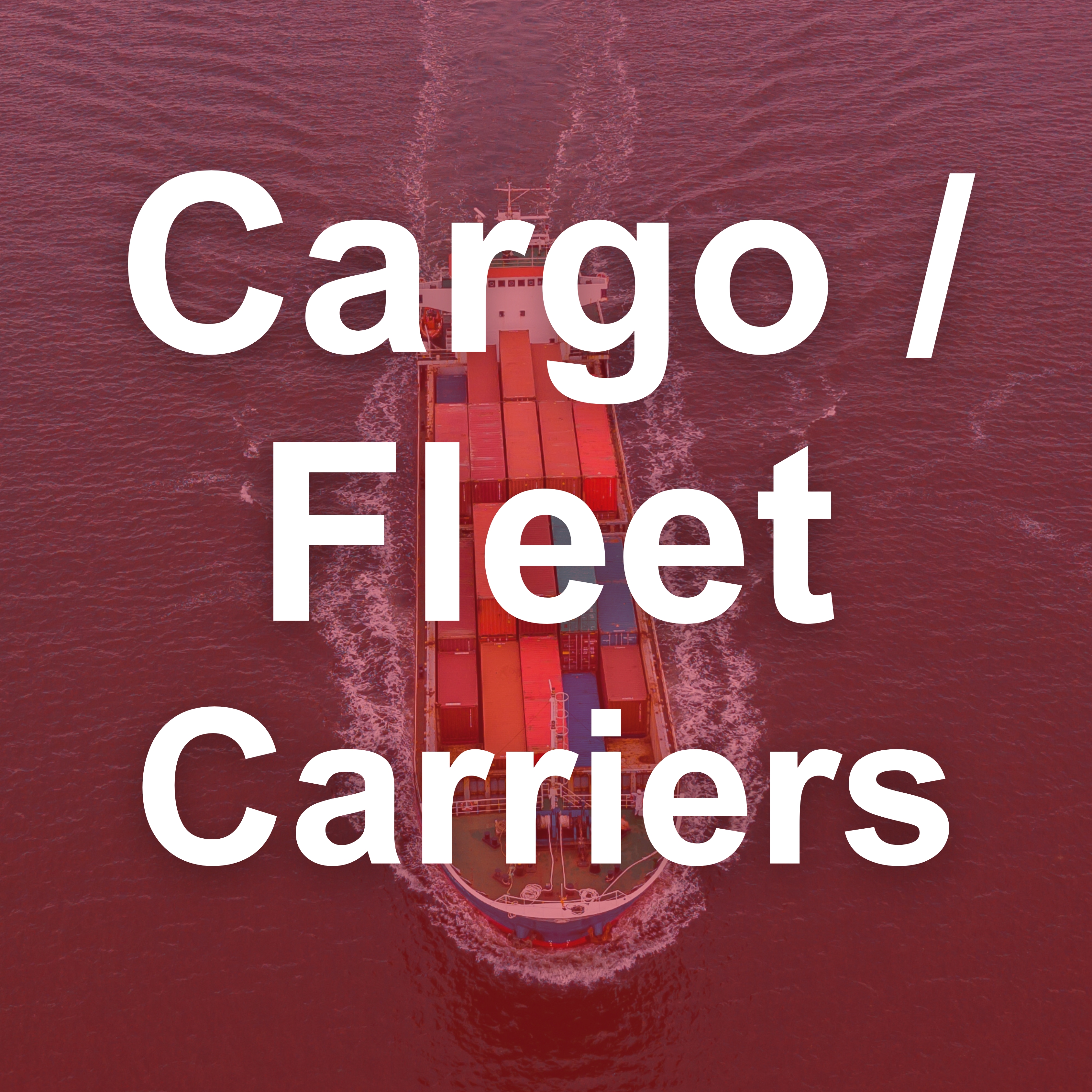
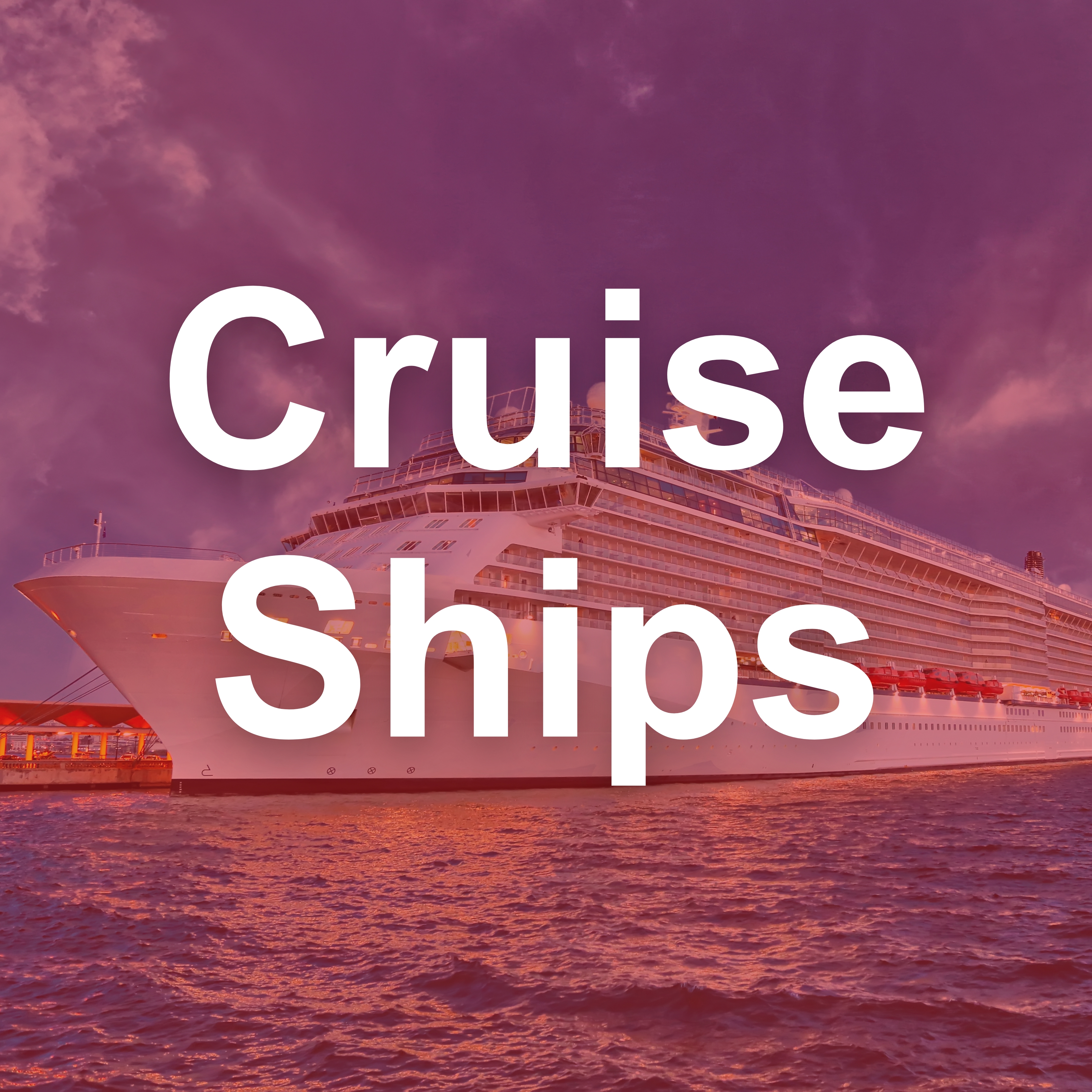
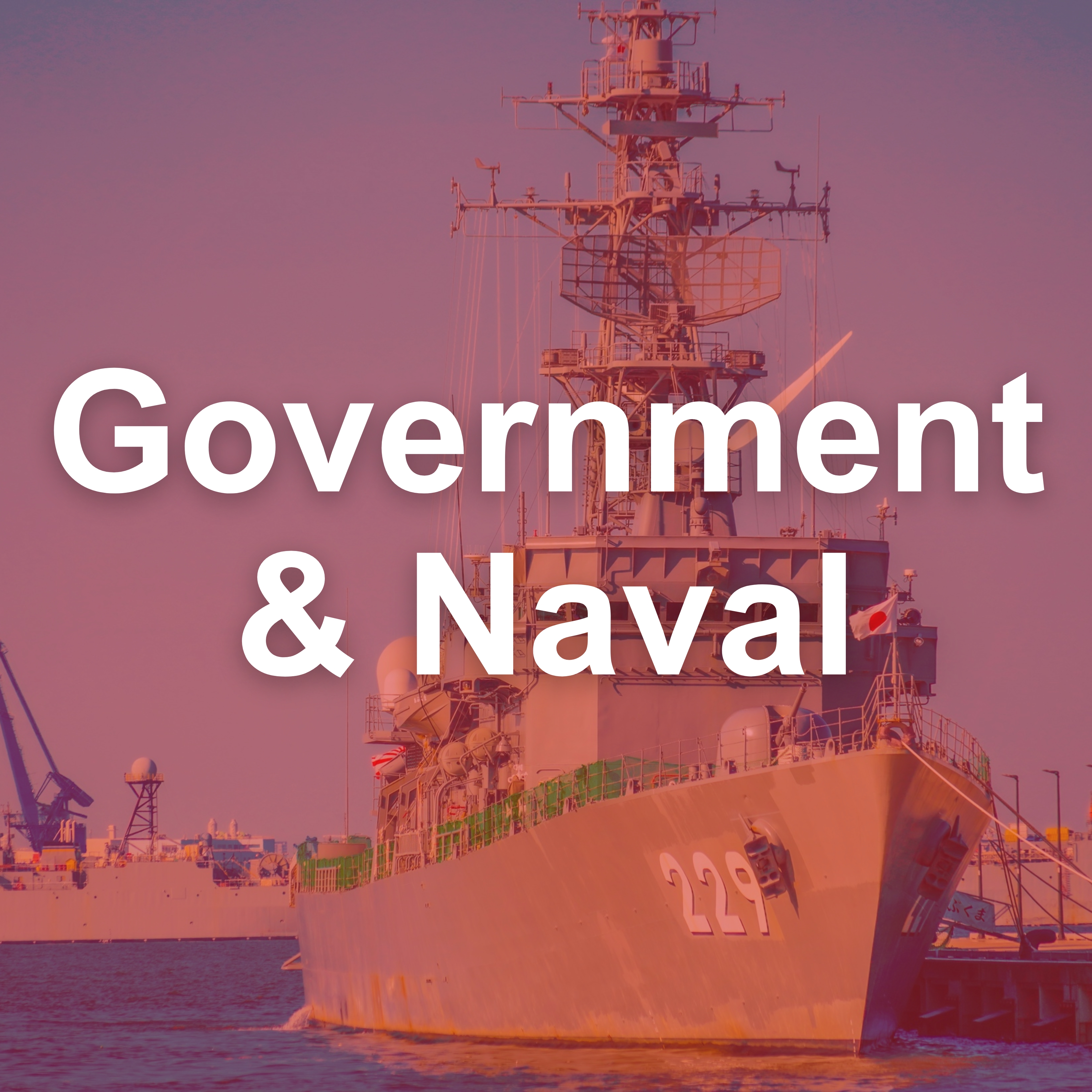
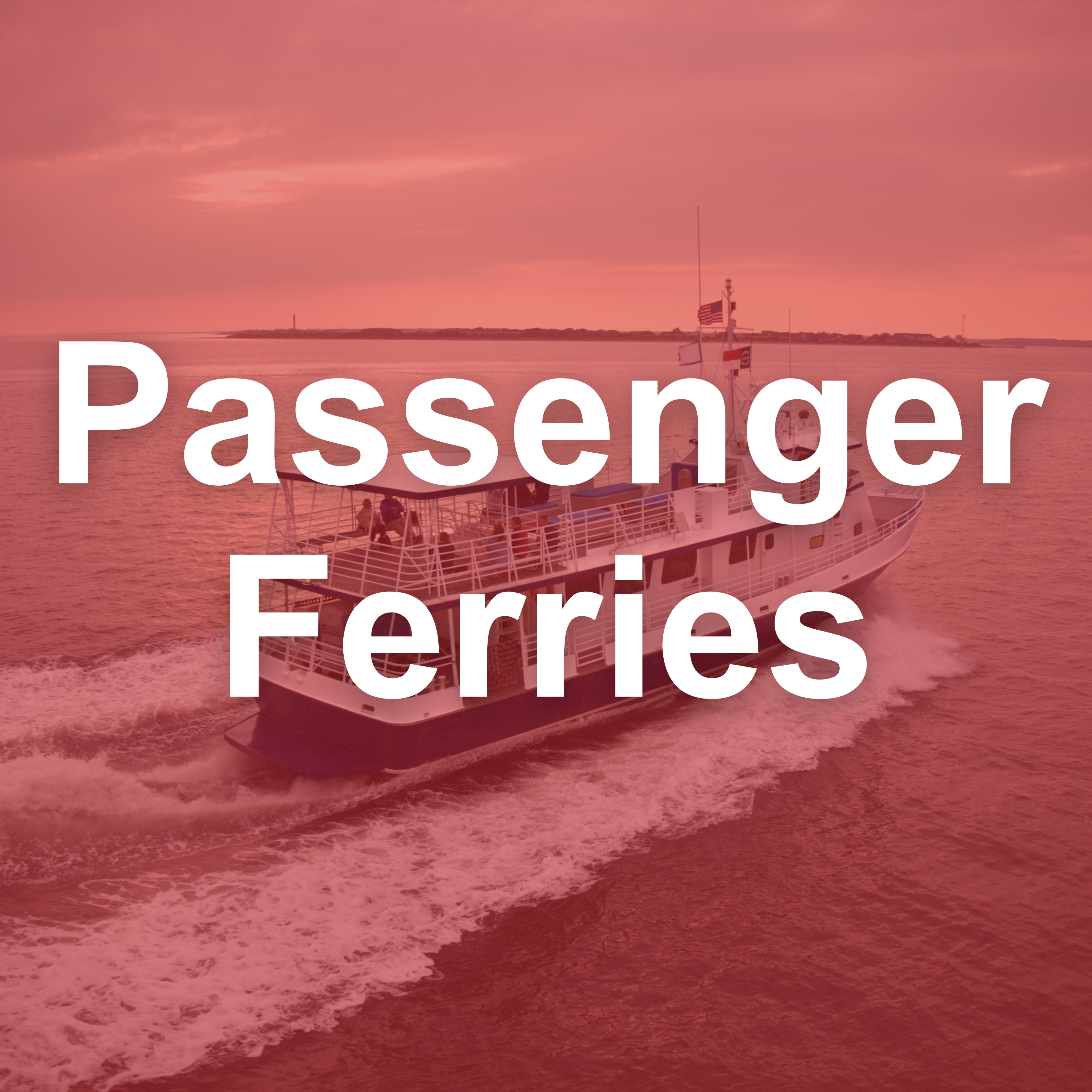
The IMO Net-Zero Framework
The IMO Net-Zero Framework is a comprehensive regulatory package designed to set the sector on a transition path to net-zero from international shipping by or around 2050.12 The latest version of the framework includes:
- Global Fuel Standard
Ships must reduce their greenhouse gas fuel intensity, measured on a well-to-wake basis. This means emissions are tracked across the entire lifecycle of the fuel, from production to combustion.13 - Pricing Mechanism
A global emissions pricing system will be introduced. Ships emitting above set thresholds will pay fines into an IMO Net-Zero Fund ($100 per ton of excess emissions over the first threshold and $380 per ton of excess emissions over the second)14 while low-emission vessels can earn credits.12 - Credit Trading System
Ships that exceed compliance targets can sell credits they earn to those that fall short, creating a market-based incentive.12 - Who Is Covered?
The framework applies to ocean-going vessels over 5,000 gross tonnage, which account for over 85% of global shipping emissions.13 It will be implemented across the 176 IMO member states.
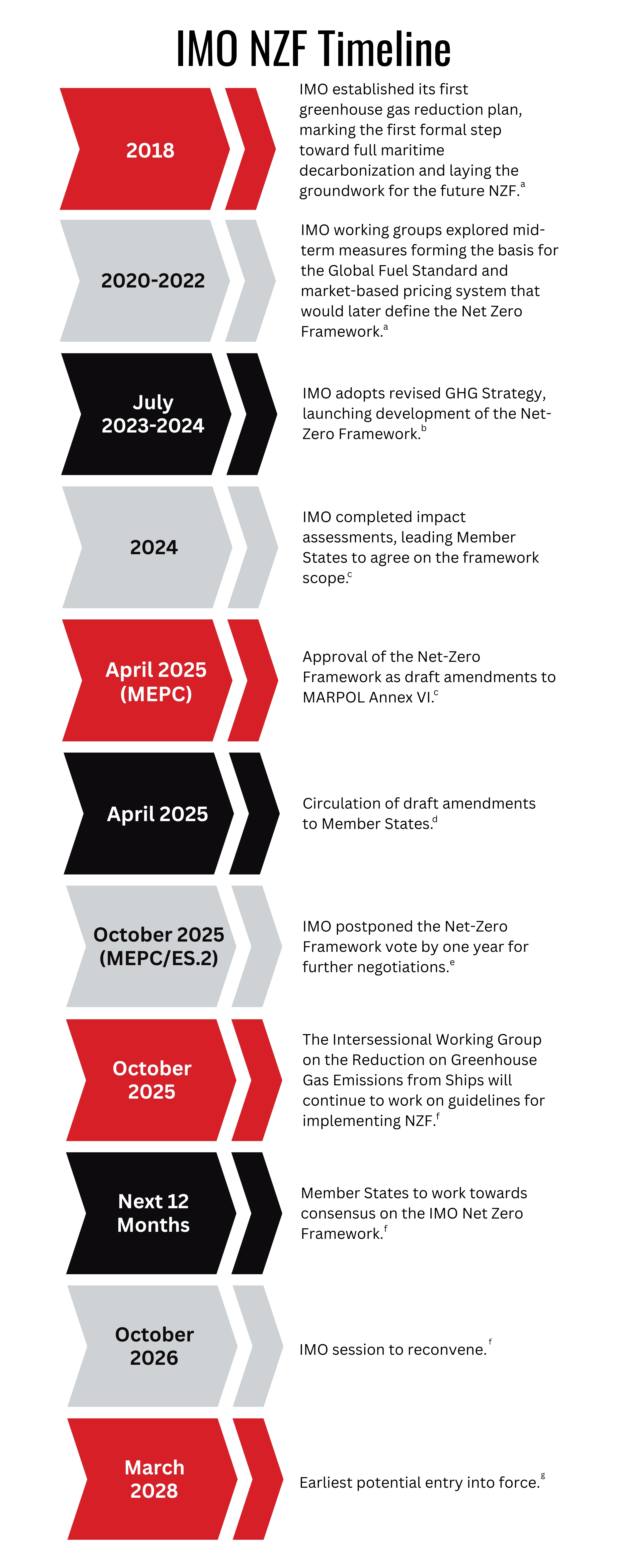
In October 2025, the IMO met to consider adoption of Net-Zero Framework. Although the Marine Environment Protection Committee (MEPC) session adjourned with the decision to reconvene in October 2026,15 the Intersessional Working Group on the Reduction of Greenhouse Gas Emissions from Ships continued to work on the guidelines for implementing the Net-Zero Framework.16 While allowing for more time to build consensus on the framework, the maritime industry can leverage this period as an opportunity to enhance compliance foundations, operational resilience, and their position in the scenario that the framework takes effect.17
RNG as a Bridge to Net-Zero
As the maritime industry progresses forward, RNG stands out as a ready, scalable pathway for compliance and sustained emissions reduction. With infrastructure and supply rapidly expanding, RNG is positioned to play a lasting role in advancing global shipping toward net- zero.
Blog Sources
- https://www.worldbiogasassociation.org/wp-content/uploads/2025/09/WBA_PositionStatement_BiomethaneMaritimeFuel_v3.pdf
- https://www.woodmac.com/news/opinion/rng-market-set-for-continued-growth-in-2025-after-historic-year/
- https://www.woodmac.com/press-releases/robust-growth-drives-north-america-rng-market-to-604-mmcfd-capacity-in-2025/
- https://www.ics-shipping.org/shipping-fact/shipping-and-world-trade-the-worlds-major-shipping-flags/
- https://cruisemarketwatch.com/growth/
- https://www.iea.org/energy-system/transport/international-shipping
- https://www.imo.org/en/ourwork/environment/pages/2023-imo-strategy-on-reduction-of-ghg-emissions-from-ships.aspx
- https://www.anl.gov/esia/life-cycle-analysis
- https://sgmf.info/resource/sgmf-and-the-transition-to-maritime-net-zero
- https://sea-lng.org/wp-content/uploads/2024/01/24-01-28_FINAL_A_View_From_The_Bridge_2024.pdf
- https://www.epa.gov/renewable-fuel-standard/overview-renewable-fuel-standard-program
- https://globalmaritimeforum.org/news/a-guide-to-the-imos-net-zero-framework/
- https://www.imo.org/en/mediacentre/hottopics/pages/faqs-the-imo-net-zero-framework.aspx
- https://nationalinterest.org/feature/the-looming-international-shipping-crisis
- https://globalmaritimeforum.org/press/negotiations-at-IMO-adjourn-without-a-decision-on-NZF/
- https://www.imo.org/en/mediacentre/pressbriefings/pages/imo-net-zero-shipping-talks-to-resume-in-2026.aspx
- https://www.reuters.com/legal/legalindustry/what-delay-imos-net-zero-framework-means-maritime-decarbonization--pracin-2025-11-06/
- https://www.imo.org/en/mediacentre/hottopics/pages/reducing-greenhouse-gas-emissions-from-ships.aspx
- https://www.imo.org/en/ourwork/environment/pages/2023-imo-strategy-on-reduction-of-ghg-emissions-from-ships.aspx
- https://www.zerocarbonshipping.com/news/countdown-how-the-imo-process-works-for-the-nzf
- https://www.imo.org/en/mediacentre/meetingsummaries/pages/preview-mepc-es2.aspx
- https://safety4sea.com/imo-decides-to-postpone-adoption-of-net-zero-framework/
- https://www.imo.org/en/mediacentre/pressbriefings/pages/imo-net-zero-shipping-talks-to-resume-in-2026.aspx
- https://www.dnv.com/news/2025/decision-on-the-imo-net-zero-framework-delayed-for-one-year/

